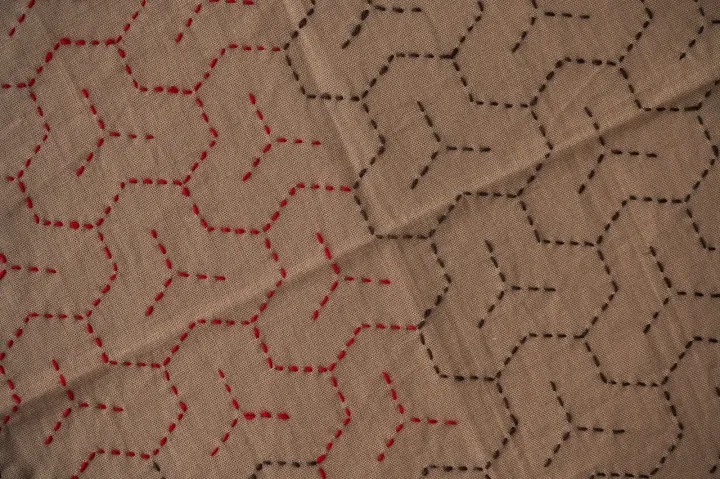Kawarikakushippō
Kawarikakushippō means "variation of angled seven treasures." | Sashiko Pattern
Kawarikakushippō 変わり角七宝 is a close relative of kakushippōtsunagi 角七宝繋ぎ and thus of shippōtsunagi 七宝繋ぎ as its name hints. It belongs to moyōzashi 模様刺し and has been around for quite a while.
Kawarikakushippō means "variation of angled seven treasures." 変わり means "change" or "variation," 角 means "angle" or "corner," 七宝 means "seven treasures."
The "angle" part refers to the change from curves to corners, the "variation" bit points at the lines stitched in moss green here.
Like many traditional patterns, kawarikakushippō is a kisshōmonyō 吉祥文様 "lucky omen pattern." Kisshōmonyō patterns represent good luck and can often be found on kimonos worn at festivities or used on gift wrappings for happy occasions. Each pattern has its own distinct meaning.
The traditional Japanese pattern shippōtsunagi means "seven treasures linked." Where circles of the same size are crossing over one another in shippōtsunagi, kawarikakushippō has slight angles instead of curves.
Kawarikakushippō bears the same meaning as its relative, shippōtsunagi. It stands for prosperity, harmony, and good relationships. That is why it can often be spotted at weddings.
The seven treasures in Mayahana Buddhism refer to gold, silver, lapis lazuli, crystal, agate, red pearl, and carnelian.
They represent the seven powers of faith, perseverance, sense of shame, avoidance of wrongdoing, mindfulness, concentration, and wisdom.





Comments ()